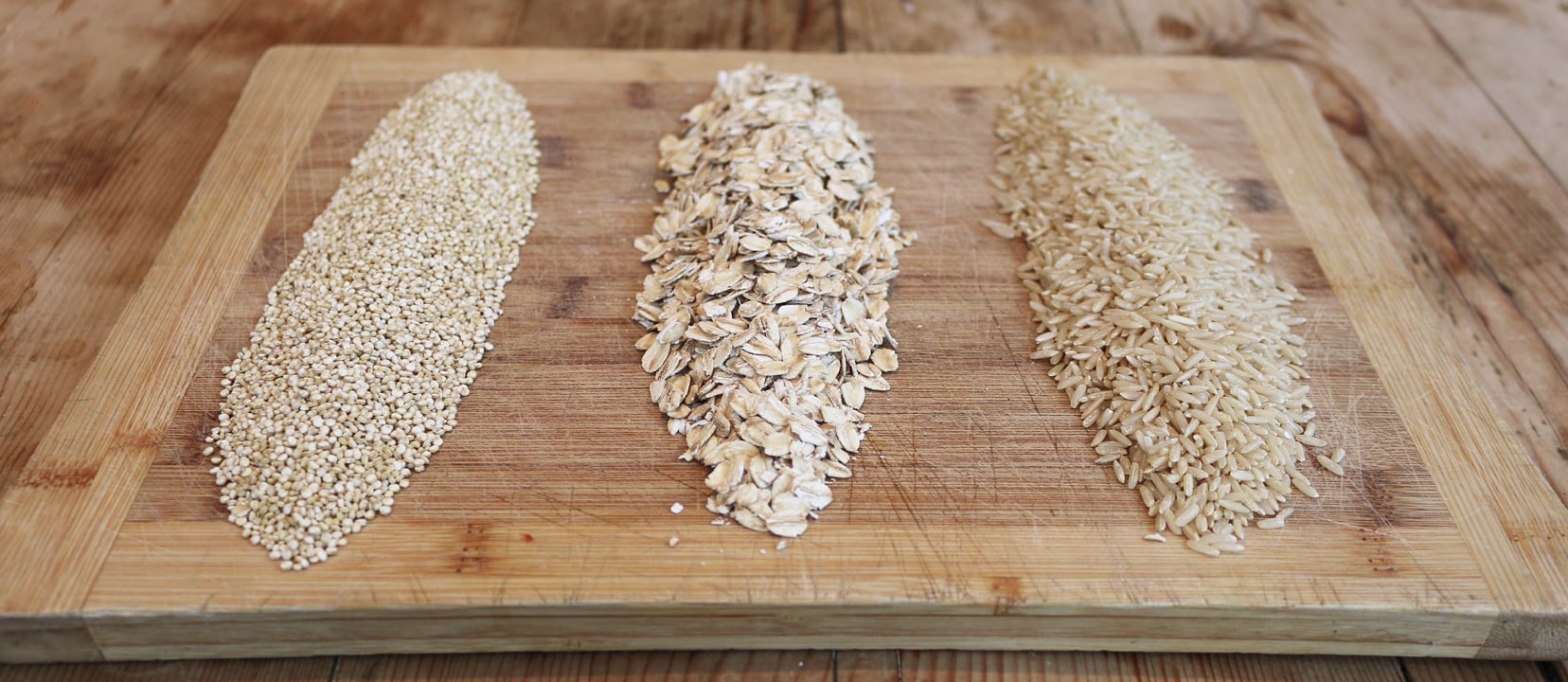If oatmeal is so powerful that it can clear up some of the ravages of chemotherapy just applied to the skin (see my video Oatmeal Lotion for Chemotherapy-Induced Rash), what might it do if we actually ate it? Oats are reported to possess varied drug-like activities like lowering blood cholesterol and blood sugar, boosting our immune system, anticancer, antioxidant, and anti-atherosclerosis activities, in addition to being a topical anti-inflammatory, and reportedly may also be useful in controlling childhood asthma and body weight.
Whole-grain intake in general is associated with lower risk of type 2 diabetes, cardiovascular disease, and weight gain, as shown in my video Can Oatmeal Help Fatty Liver Disease?. All of the cohort studies on type 2 diabetes and heart disease show whole grain intake is associated with lower risk.
Researchers have observed the same for obesity—consistently less weight gain for those who consumed a few servings of whole grains every day. All the forward-looking population studies demonstrate that a higher intake of whole grains is associated with lower body mass index and body weight gain. However, these results do not clarify whether whole grain consumption is simply a marker of a healthier lifestyle or a factor favoring lower body weight.
For example, high whole grain consumers—those who eat whole wheat, brown rice, and oatmeal for breakfast—tend to be more physically active, smoke less, and consume more fruit, vegetables, and dietary fiber than those that instead reach for Froot Loops. Statistically, one can control these factors, effectively comparing nonsmokers to nonsmokers with similar exercise and diet as most of the studies did, and they still found whole grains to be protective via a variety of mechanisms.
For example, in terms of helping with weight control, the soluble fiber of oatmeal forms a gel in the stomach, delaying stomach emptying, making one feel full for a longer period. It seems plausible that whole grain intake does indeed offer direct benefits, but only results of randomized controlled intervention studies can provide direct evidence of cause and effect. In other words, the evidence is clear that oatmeal consumers have lower rates of disease, but that’s not the same as proving that if we start eating more oatmeal, our risk will drop. To know that, we need an interventional trial, ideally a blinded study where you give half the people oatmeal, and the other half fake placebo oatmeal that looks and tastes like oatmeal, to see if it actually works. And that’s what we finally got—a double-blinded randomized trial of overweight and obese men and women. Almost 90% of the real oatmeal-treated subjects had reduced body weight, compared to no weight loss in the control group. They saw a slimmer waist on average, a 20 point drop in cholesterol, and an improvement in liver function.
Nonalcoholic fatty liver disease, meaning a fatty liver caused by excess food rather than excess drink, is now the most common cause of liver disease in the United States, and can lead in rare cases to cirrhosis of the liver, cancer of the liver, and death. Theoretically, whole grains could help prevent and treat fatty liver disease, but that was the first time it had been put to the test. A follow-up study in 2014 confirmed these findings of a protective role of whole grains, but refined grains were associated with increased risk. So, one would not expect to get such wonderful results from Wonder Bread.
How can you make your oatmeal even healthier? See Antioxidants in a Pinch.
Whole Grains May Work As Well As Drugs for hypertension, but refined grain intake may linked with high blood pressure and diseases like diabetes. But If White Rice is Linked to Diabetes, What About China?.
More on keeping the liver healthy in videos like:
- How Much Added Sugar Is Too Much?
- Preventing Liver Cancer with Coffee
- Cranberries versus Cancer
- Poultry Exposure Tied to Liver and Pancreatic Cancer
- Treating Hepatitis C with Chlorella
- How to Prevent Non-alcoholic Fatty Liver Disease
In health,
Michael Greger, M.D.
PS: If you haven’t yet, you can subscribe to my free videos here and watch my live, year-in-review presentations:
- 2012: Uprooting the Leading Causes of Death
- 2013: More Than an Apple a Day
- 2014: From Table to Able: Combating Disabling Diseases with Food
- 2015: Food as Medicine: Preventing and Treating the Most Dreaded Diseases with Diet
- 2016: How Not To Die: The Role of Diet in Preventing, Arresting, and Reversing Our Top 15 Killers
